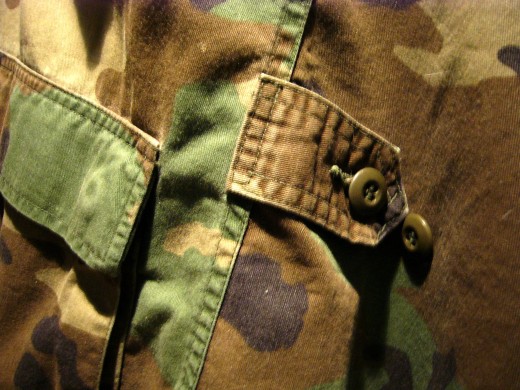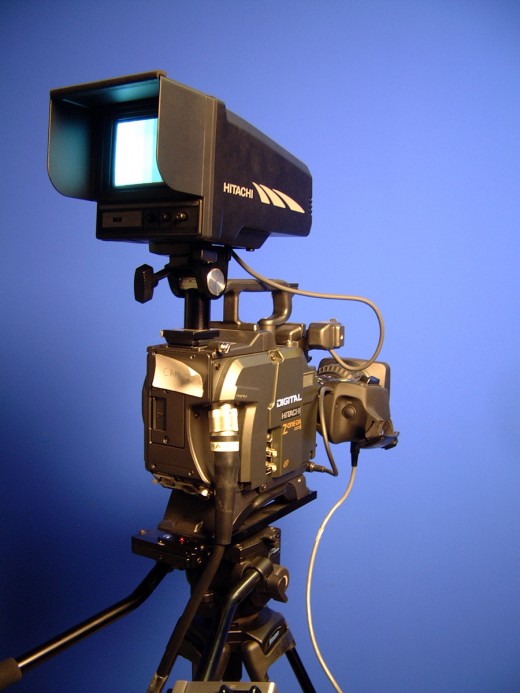Active Camouflage

Using Technology to “Blend In”
Have you ever wanted to be invisible? Ever wanted to blend into your environment and just kind of disappear to avoid that awkward moment, sneak a peek at the answers to a test or at a masterpiece in progress, or maybe just to pull off some stunt that might otherwise gain unwanted attention? Sure, we all have, but unless you've got a spare set of BDU's (essentially military fatigues) with all the trimmings and your "business" is happening in a thickly wooded area, you're probably not going to get very far before someone notices you. (Plus, seeing a guy or a girl sneaking around in cammies and battlefield face paint can be kind of... unnerving.) Of course, while Active Camouflage might still be overkill in these sorts of circumstances, the idea behind it essentially remains the same- it has the definite potential to allow the wearer the ability to see without actually being seen, or to see through something substantial, no matter how thick, as if it were glass, and theoretically be able to control what is projected upon it as well.
Now, of course, camouflage itself is by no means a new concept- We see it everywhere in nature, from the chameleon to cephalopods, and even in some less advanced forms (i.e. in the simple variations of coloration in fur or feathers) but, when it comes right down to it, even the infamous color changing abilities of an octopus or the aforementioned chameleon pale in comparison to the wonders of Active Camouflage. Why? Well, read on:

Firstly, let's break it down to basics, because in truth, the way in which active camouflage works is exceedingly simple; have you ever hooked a video camera to a television while it was on "record" mode? It's nothing special, and doesn't do much more than make a bigger image of what the camera already sees, but it's the idea that counts. Now, say you were to take that camera, set it on the television, and turn it so it faced the opposite direction as the screen; you'd get an exciting picture of... well... nothing- a wall, probably, but nothing special, right? Ah, but here's the trick! Take away the edges of the television, everything but the screen, set the camera directly behind it and voila! you can see right through it; the camera is invisible! Not excited yet? Consider that, by placing the screen and the camera in such a manner that they face the same direction, you'll get a picture of yourself and the room you're in, say, your living room or kitchen; people who walk into the room will see themselves on the screen and instantly notice it, (and probably do something silly, but that's beside the point,) but, by taking the camera and turning it so it faces the opposite direction, the screen will show a picture of whatever is behind it, meaning if a person walks by the camera, he or she will show up on the screen and, if the camera's placed right, there will be little, if any real difference (at least from a reasonable distance) in the way he or she looks before, during, and after he or she passes behind the screen. Or, on an even greater scale, imagine a screen so large it serves as a wall of your home, connected to a whole cluster of cameras outside; from the outside, all you see is a wall of cameras, (though I'm sure the cameras could easily be disguised so your neighbors wouldn't get uneasy) but on the inside, it looks like there's absolutely no wall there at all- it's just invisible, giving you a view of the road, trees, neighboring houses, etc. This is the basic idea behind active camouflage- it is essentially a screen that projects what a camera sees in such a way as to fool the naked eye into perceiving something as transparent, no matter how many curves, creases or folds are in it.

Now, that doesn't mean there are crackpot scientists wandering around in the streets holding cameras with flatscreens strapped to their chests, saying "Look! I'm invisible!" but I'm sure something like that has probably happened in the past. In recent years, however, advances in the field have yielded something truly amazing- Japanese scientist Kazutoshi Obana's invisibility coat, a truly magnificent piece of work that literally makes most of the man's body invisible by effectively turning the thousands of microscopic reflectors embedded in the coat into one big movie screen. Sound too good to be true? It's just one (albeit the first!) of many prototypes being designed and constructed by scientists all over the world. And when I say it makes him invisible, that's no exaggeration- it's something you literally have to see for yourself.
But that's not the end all and be all of research into active camouflage- Different forms of optical camouflage, operating off completely different principles than the "camera and screen" method are a definite possibility; the people behind the United States' military's own "Invisible Soldier" project are currently working on fabrics that function like LCD displays, changing color as electrical current is applied to them much like the skin of an octopus. This of course doesn't provide true invisibility, but it is close, and while research seems to be slow, this work may one day yield uniforms, cloaks, blankets and any number of other articles of clothing or covers, capable of keeping a soldier or a vehicle from being seen by the naked eye and even infrared, something which Active Camouflage cannot do, at least, not yet. For now, though, we have yet to see anything more promising than Obana's coat come out of research into better forms of camouflage, and even that has been described as an "embryonic" development.

So, while we may watch movies like Predator or The Invisible Man, dreaming of (or perhaps dreading!) a time when this sort of technology will be common place, the truth is, it's really not all that far off- another decade is likely to yield tremendous advances in the field, allowing researchers to produce prototypes for the first fully enclosed, windowless cars, trucks, aircraft, and other sorts of vehicles that still allow us to see everything above, below, and around us, without having to worry about those blind spots (and I can tell you, light civilian aircraft could benefit greatly from this kind of technology- imagine, being able to see the ground perfectly as it comes up beneath you, or being able to see behind without the tail or the empennage getting in the way!) Or, imagine airliners that, while perfectly visible on the outside, project a "bird's eye view" of everything around the plane to the inside of the plane, replacing all that boring grey and blue with the wild blue yonder and all the beauty that nature has to offer. But even if aviation isn't even remotely your thing, consider the implications elsewhere; the same basic idea of being able to see everything around you without being seen can apply to houses, office buildings- almost anything! Or, imagine the tactical impact of military vehicles, both ground based and aloft, able to see everything around them perfectly without being seen- with active camouflage, the possibilities are endless, and if the sky's really the limit, chances are you'll be able to see it perfectly when you get there.








